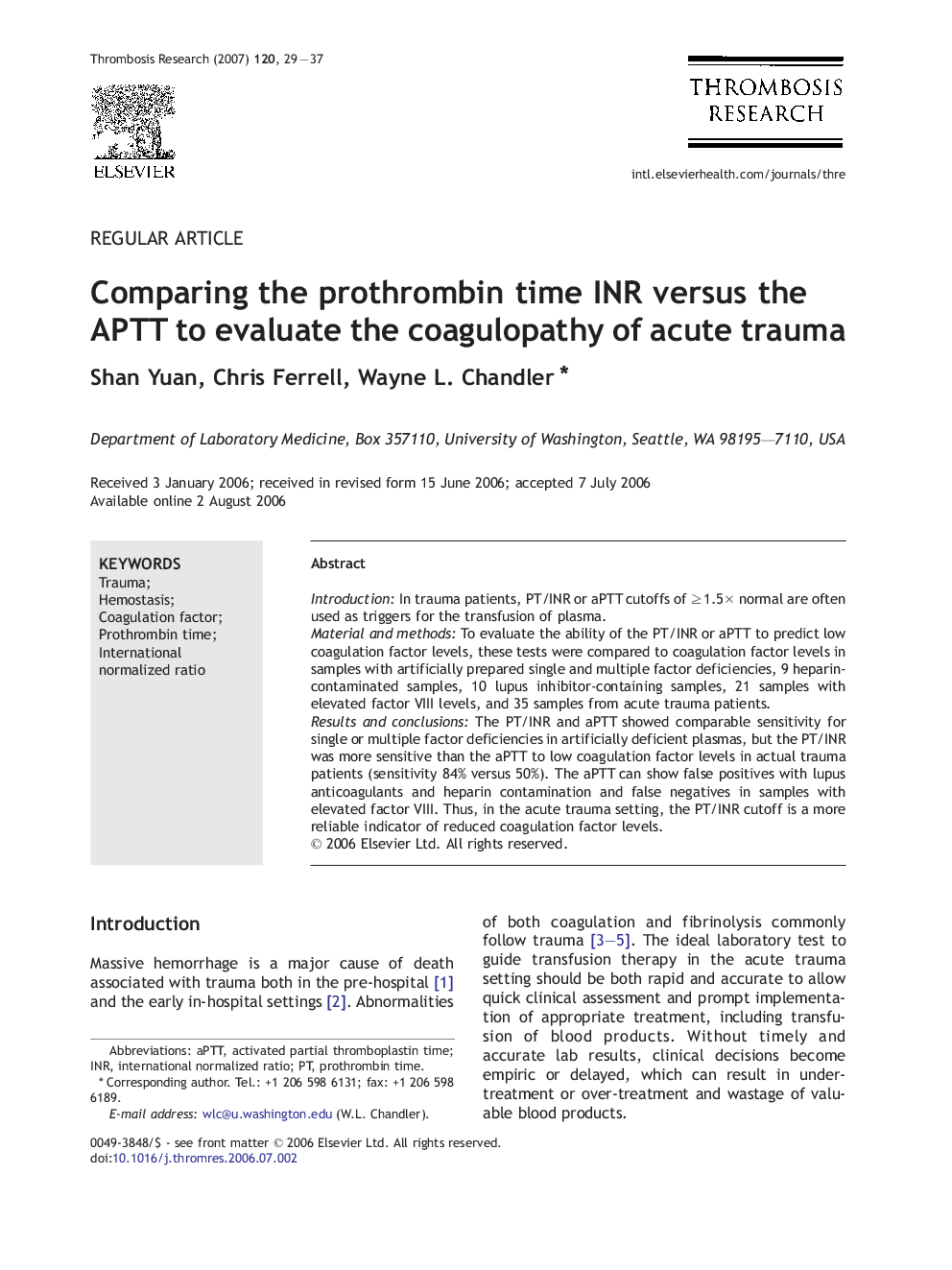| کد مقاله | کد نشریه | سال انتشار | مقاله انگلیسی | نسخه تمام متن |
|---|---|---|---|---|
| 3028462 | 1183014 | 2007 | 9 صفحه PDF | دانلود رایگان |

IntroductionIn trauma patients, PT/INR or aPTT cutoffs of ≥ 1.5× normal are often used as triggers for the transfusion of plasma.Material and methodsTo evaluate the ability of the PT/INR or aPTT to predict low coagulation factor levels, these tests were compared to coagulation factor levels in samples with artificially prepared single and multiple factor deficiencies, 9 heparin-contaminated samples, 10 lupus inhibitor-containing samples, 21 samples with elevated factor VIII levels, and 35 samples from acute trauma patients.Results and conclusionsThe PT/INR and aPTT showed comparable sensitivity for single or multiple factor deficiencies in artificially deficient plasmas, but the PT/INR was more sensitive than the aPTT to low coagulation factor levels in actual trauma patients (sensitivity 84% versus 50%). The aPTT can show false positives with lupus anticoagulants and heparin contamination and false negatives in samples with elevated factor VIII. Thus, in the acute trauma setting, the PT/INR cutoff is a more reliable indicator of reduced coagulation factor levels.
Journal: Thrombosis Research - Volume 120, Issue 1, 2007, Pages 29–37